Reasons of Hair Loss in Male
There are many different reasons why you may be experiencing hair loss. Below are a few of the reasons:

Genetics is the most common cause of hair loss in men.21 Hereditary hair loss or male pattern baldness accounts for 95% of hair loss in men and can come from either your mother or father’s side.10 You’ve probably looked at other members of your family and noticed your hair is following a similar pattern to theirs. You will not necessarily follow the same pattern – your hair loss may prove to be less, the same or more. Unfortunately there is no cure for this type of hair loss. With on going treatment using REGAINE®, it can help to stop and even reverse hereditary hair loss.4
How Male Pattern Baldness Works
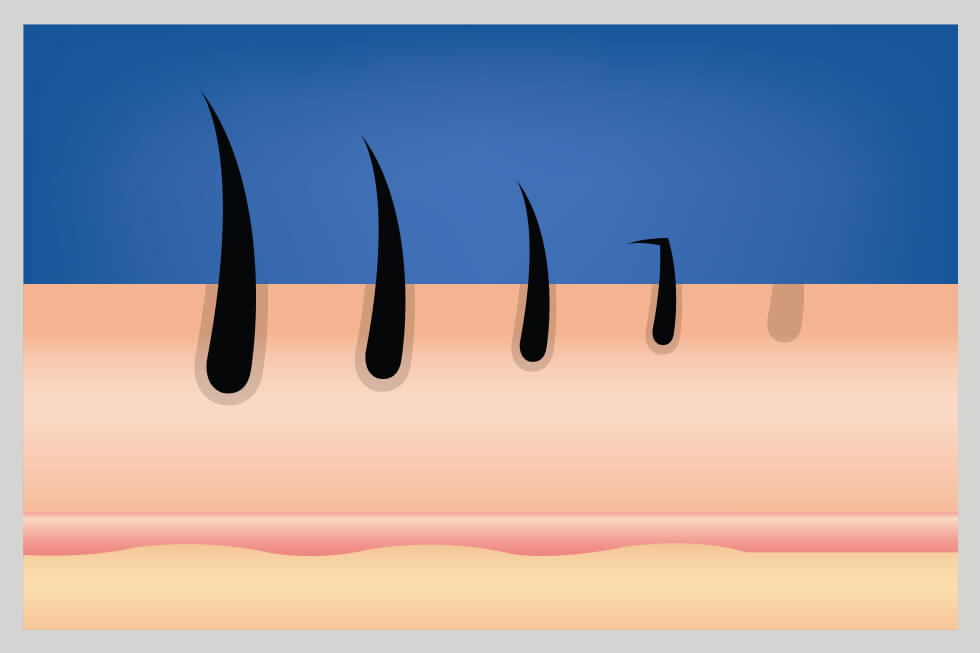
REASONS FOR HAIR LOSS
Many factors can cause people to lose their hair (medication, poor nutrition, severe stress) but the most common is hereditary hair loss.18,21
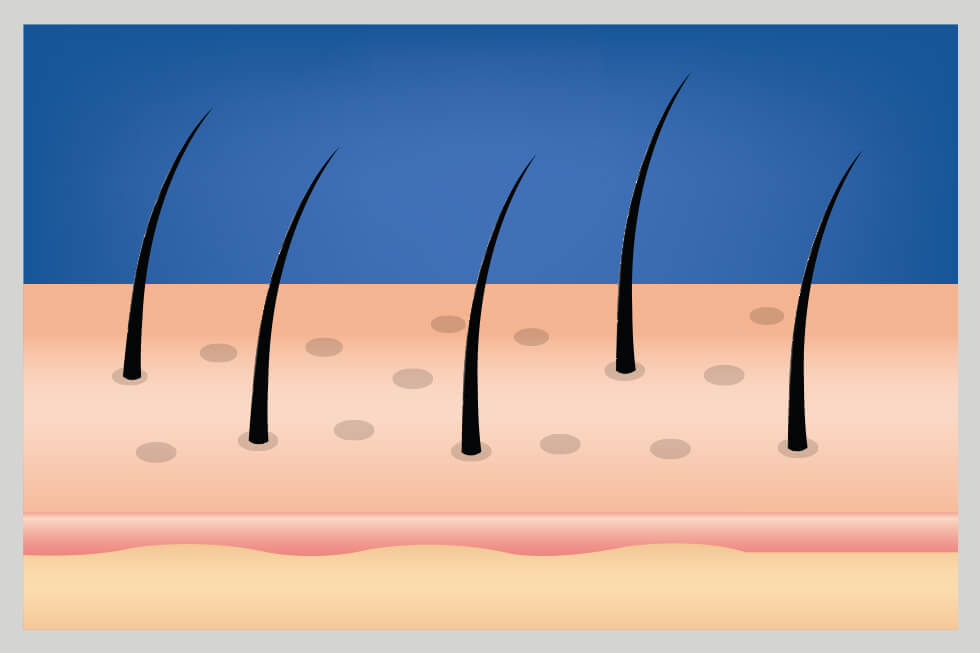
How does hair loss happen?
Each hair growth cycle produces shorter, finer, much less visible hair. Genetics, hormones and age can all play a part in hair loss.
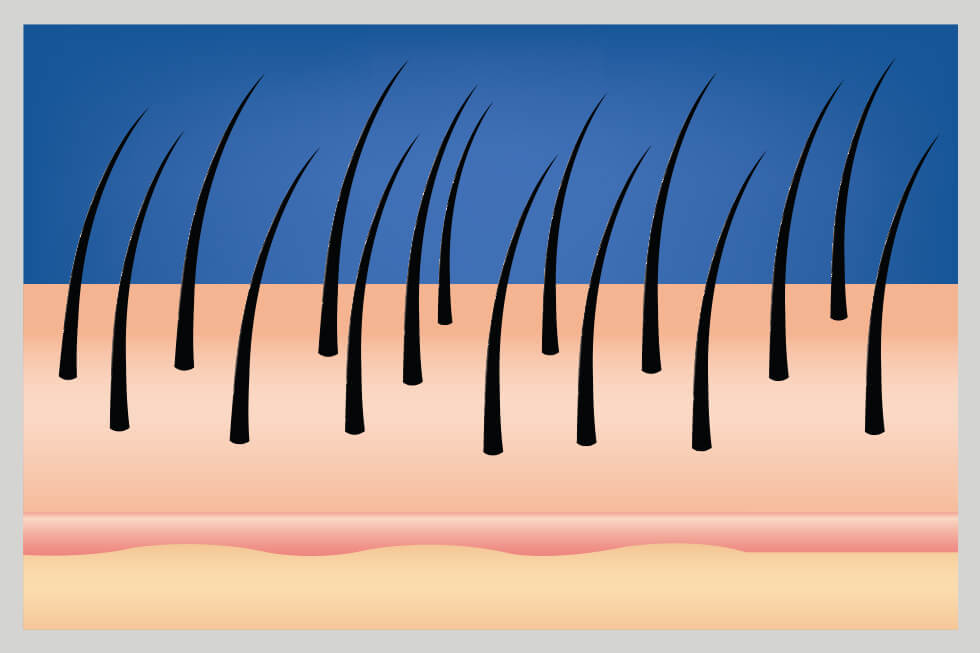
REACTIVATE YOUR HAIR FOLLICLES
Minoxidil, the active ingredient in REGAINE®, reactivates hair follicles on your scalp so you can regrow thicker, fuller looking hair.4
Stages of Hair Growth Cycle & How Hair Loss Happens in Men
The hair growth cycle has three phases: the growth, involution and resting phase.13 Below is more information about what happens in each phase of the hair growth cycle.
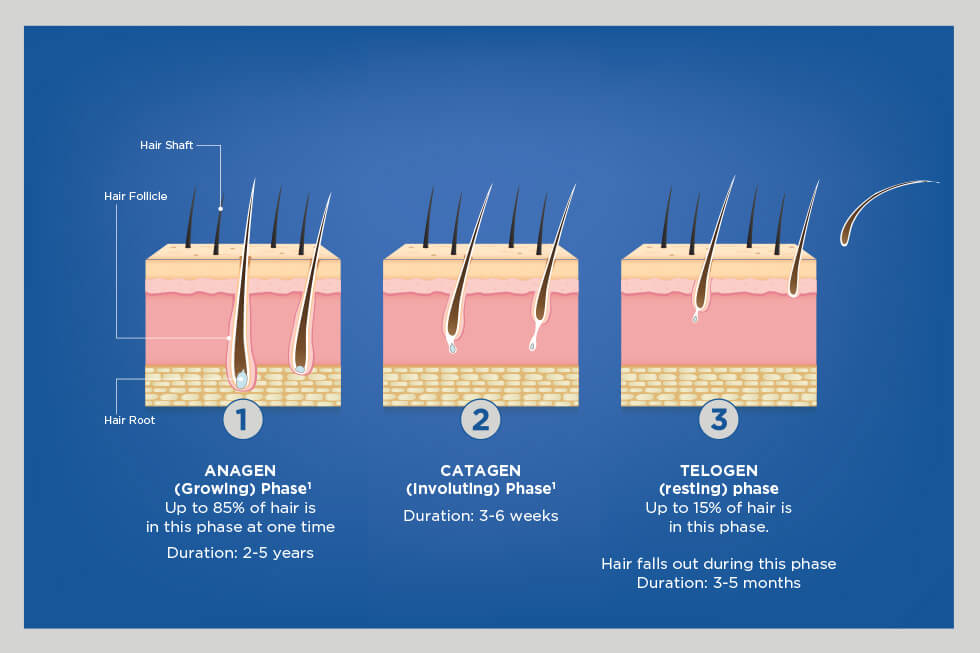
PHASE 1: GROWTH (OR ANAGEN) PHASE
For every hair on your head, the cycle begins with the growth phase, which lasts from 2 to 5 years. The hair grows at 1cm a month and usually about 85% of your hair is in anagen phase.13
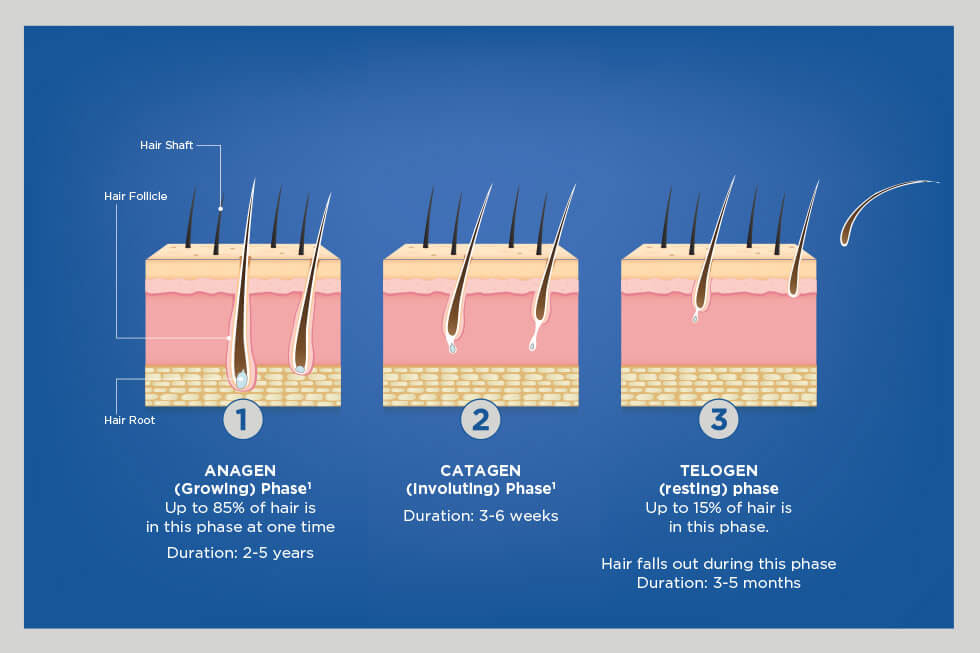
PHASE 2: INVOLUTION (OR CATAGEN) PHASE
Eventually, the cells at the base of the hair stop multiplying. As a result, the hair stops growing before the resting phase begins. This Catagen phase lasts about 3 to 6weeks.13

PHASE 3: RESTING (OR TELOGEN) PHASE
After the involution phase, the hair follicles enter a 3-month resting phase.13 At the end of the resting phase the hair is shed, and a new hair replaces it and the growing cycle starts again.
The progress of hereditary hair loss depends on the hair cycle itself, as well as a hormone called dihydrotestosterone (DHT). If you’re genetically predisposed to hair loss, you’ll likely be sensitive to this hormone. DHT shortens the hair cycle so that it spends less time in the active growing phase before it falls out.The hair that replaces the fallen strands is finer and shorter, until eventually the follicle shuts down entirely. The texture of the remaining hair may start to change, from full and thick to lifeless and dull, with less colour pigment. You may not even notice significant shedding. This process is called miniaturisation.Also read: 10 Tips For Healthier Hair
Reasons for Hair Loss in Male
Telogen effluvium16
Telogen effluvium occurs when there is an increase in the number of hairs shed each day. An increased proportion of hairs shift from the growing phase (anagen) to the shedding phase (telogen). Normally only 10% of the scalp hair is in the telogen phase, but in telogen effluvium this increases to 30% or more. This usually happens suddenly and can occur approximately 3 months after a trigger.16 Some common triggers of telogen effluvium are stress, medication and change in diet.16 If you experience this type of hair loss, consult your doctor for treatment.
Alopecia Areata/ Auto-immune Disorder32
Another type of hair loss is alopecia areata, an auto-immune disorder that causes defined patches or complete hair loss that may happen rapidly.32 Alopecia Areata can result in total hair loss, which can prevent hair from growing back. When the hair does grow back, it’s possible that is will fall out again. There’s currently no cure for alopecia areata, but there are treatments that may help hair grow back and prevent future hair loss, as well as ways to cover up the hair loss that you are experiencing.32 If you experience this type of hair loss consult your doctor for treatment.
Hair Loss Due To Over Styling/ Traction Alopecia
We all love to style our hair. However, manbuns and cornrows can all pull on your hair, resulting in hair loss that can lead to a condition known as traction alopecia.18,33 Early on, you may experience little bumps on your scalp that look like pimples. As the condition progresses, the main sign of traction alopecia is missing and broken hairs with the front and sides of your scalp most often affected.18 However, depending on your normal hair style, you may also experience hair loss on other areas of your scalp. Traction alopecia can be reversed if you opt for hairstyles that put less tension on your hair. If you don’t intervene soon enough, the hair loss may be permanent.18 If you experience this type of hair loss consult your doctor for treatment.
Factors Affecting Hair Loss in Men
Along with the causes of hair loss mentioned above there are a number of factors that can increase your risk of hair loss, including18:
A family history of hair loss on your mother's or father's side
Age
Significant weight loss
Certain medical conditions, such as diabetes and lupus
Stress
Poor nutrition

Hair Loss Myths
Nobody likes to talk about hair loss. It can be embarrassing, upsetting, and can impact a sufferer’s confidence.9 You may have heard some myths surrounding hair loss, so we have answered the most common myths for you
References:
4. REGAINE® SPC – Section 5.1.
7. Stearn, M. (1998). Embarassing Problems. Health Press, 21-25.
11. American Hair Loss Association. (n.d). Men’s Hair Loss: Treatment. Retrieved May 7, 2020, from https://www.americanhairloss.org/men_hair_loss/treatment.html.
15. American Hair Loss Association. (n.d.). Men’s Hair Loss: Causes of Hair Loss. Retrieved May 7, 2020, from https://www.americanhairloss.org/men_hair_loss/causes_of_hair_loss.html.
16. Shapiro J. (2007). Clinical practice. Hair loss in women. The New England journal of medicine, 357(16), 1620–1630.
21. Jacobs, J. P., Szpunar, C. A., & Warner, M. L. (1993). Use of topical minoxidil therapy for androgenetic alopecia in women. International journal of dermatology, 32(10), 758–762.
23. Drugs.com. (n.d.). Hereditary-Pattern Baldness. Retrieved March 16, 2020, from http://www.drugs.com/health-guide/hereditary-patterned-baldness.html.
24. HairGuard. (n.d). Rogaine Foam Vs. Liquid – Which Works Best for Hair Growth? Retrieved October 24, 2020, from https://www.hairguard.com/rogaine-foam-vs-liquid/#:~:text=The%20foam%20form%20of%20Rogaine,development%20than%20the%20topical%20solution.&text=This%20was%20found%20not%20to,to%20reach%20the%20hair%20follicles.
25. American Hair Loss Association. (n.d.). Men’s Hair Loss: Diagnosis. Retrieved May 7, 2020, from https://www.americanhairloss.org/men_hair_loss/diagnosis.html.
34. British Association of Dermatologists. (2015). Hair loss - male pattern (androgenetic alopecia). Retrieved January 6, 2020, from https://www.bad.org.uk/for-the-public/patient-information-leaflets/androgenetic-alopecia.

